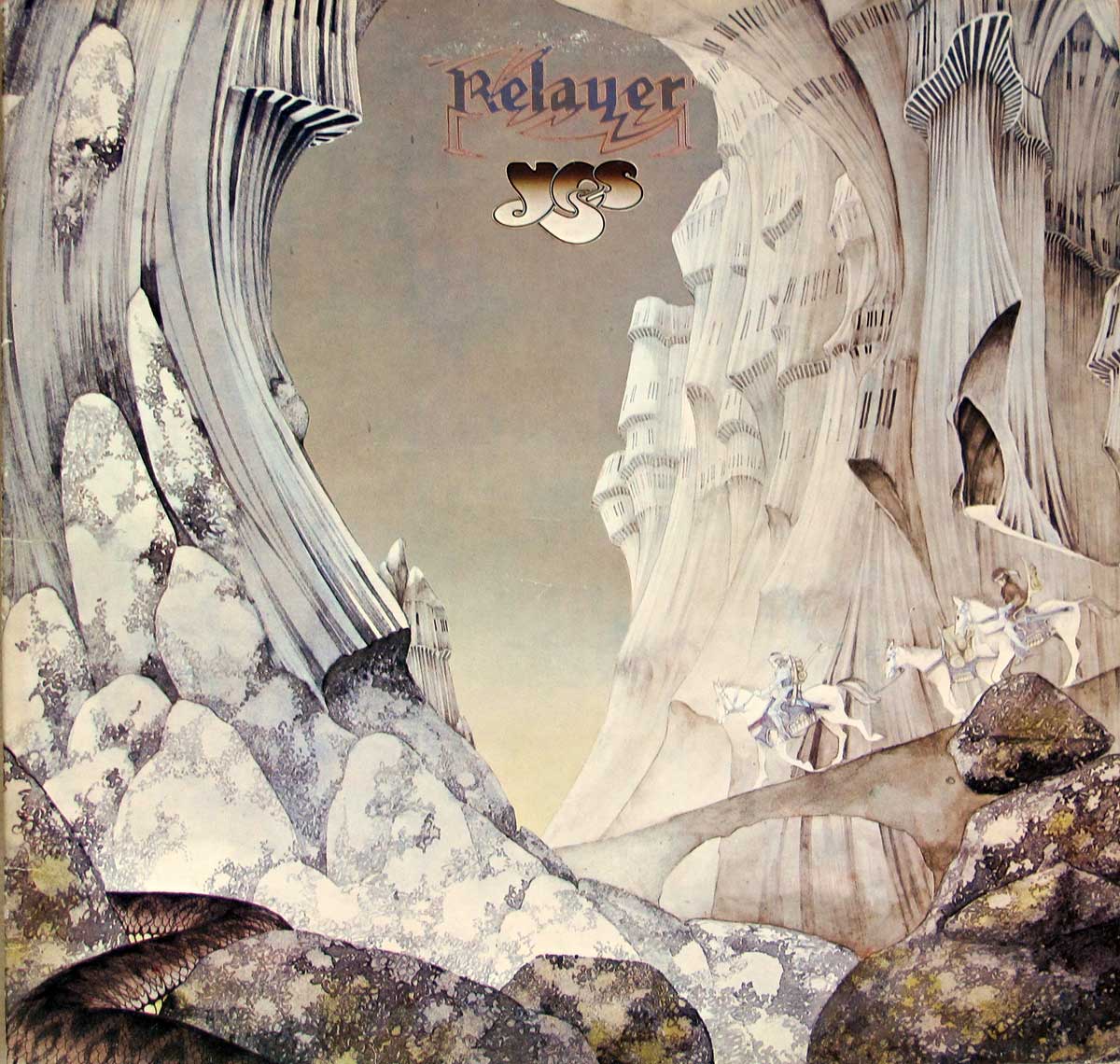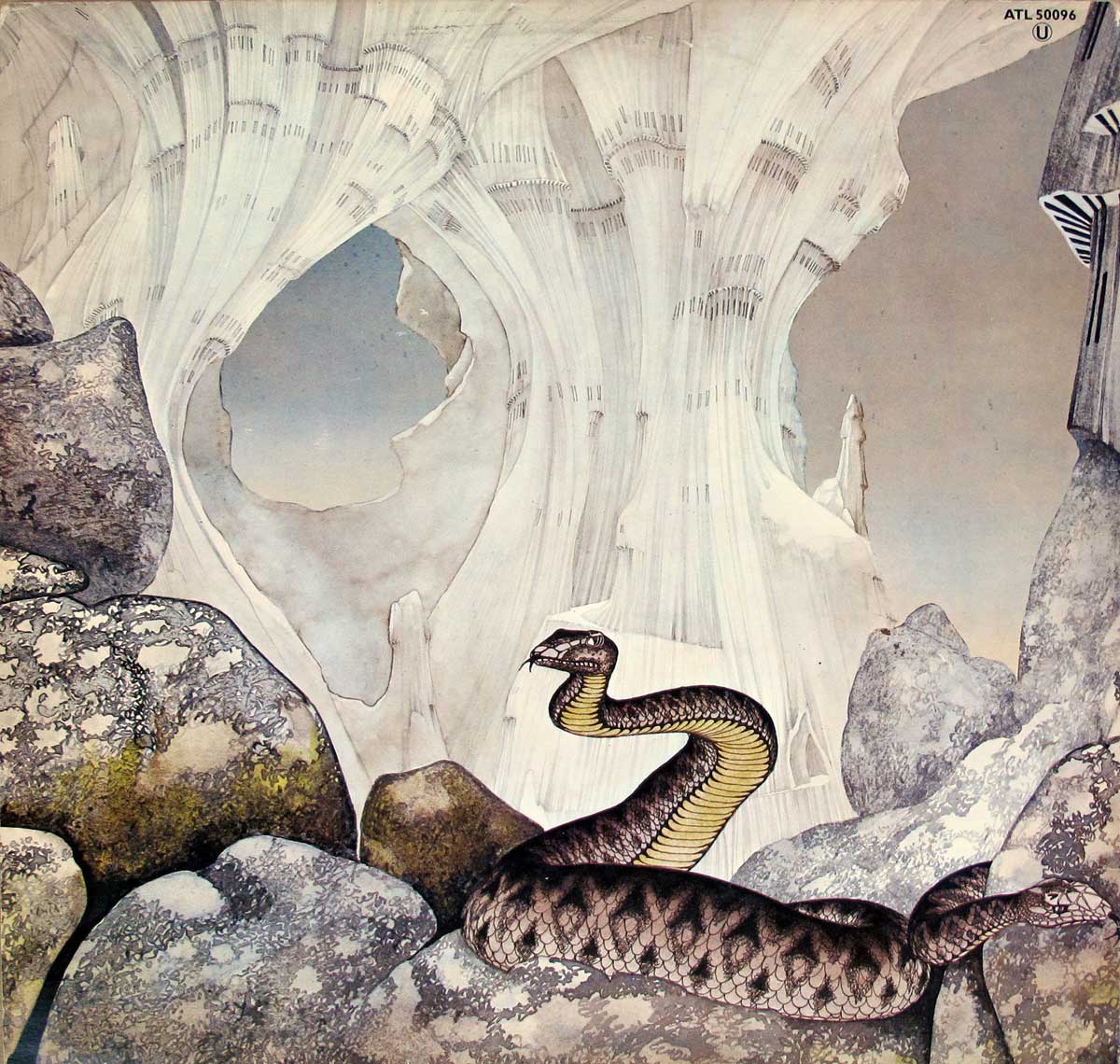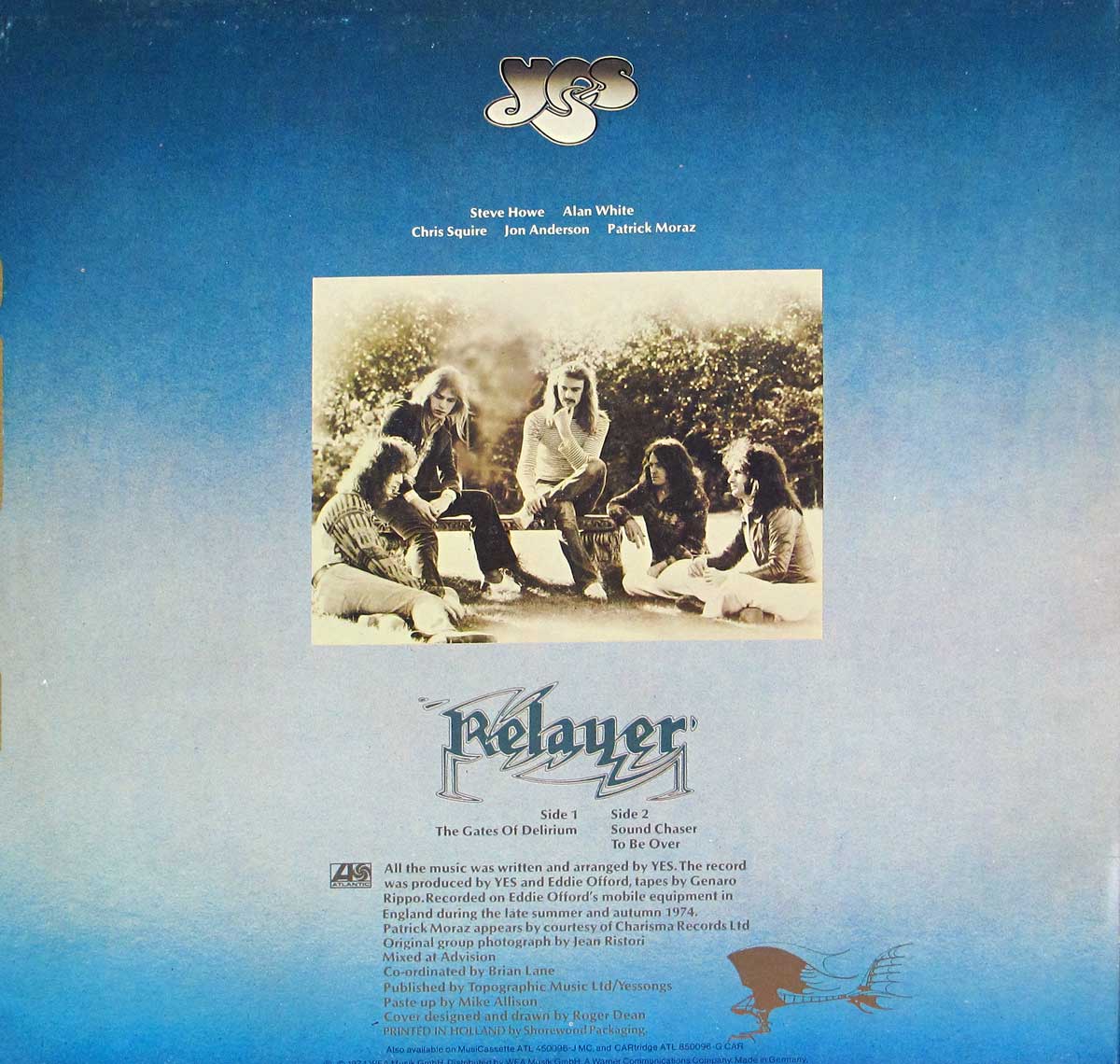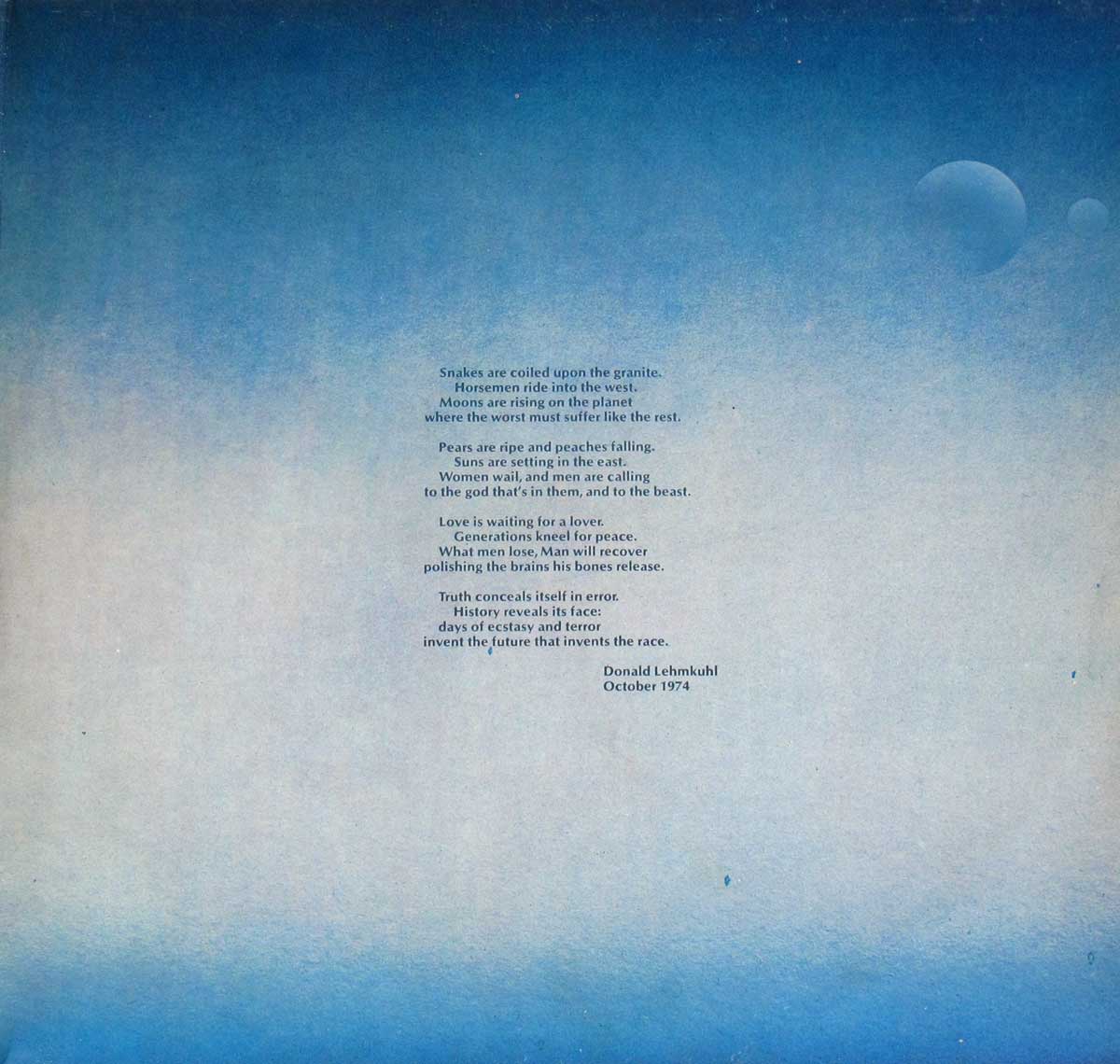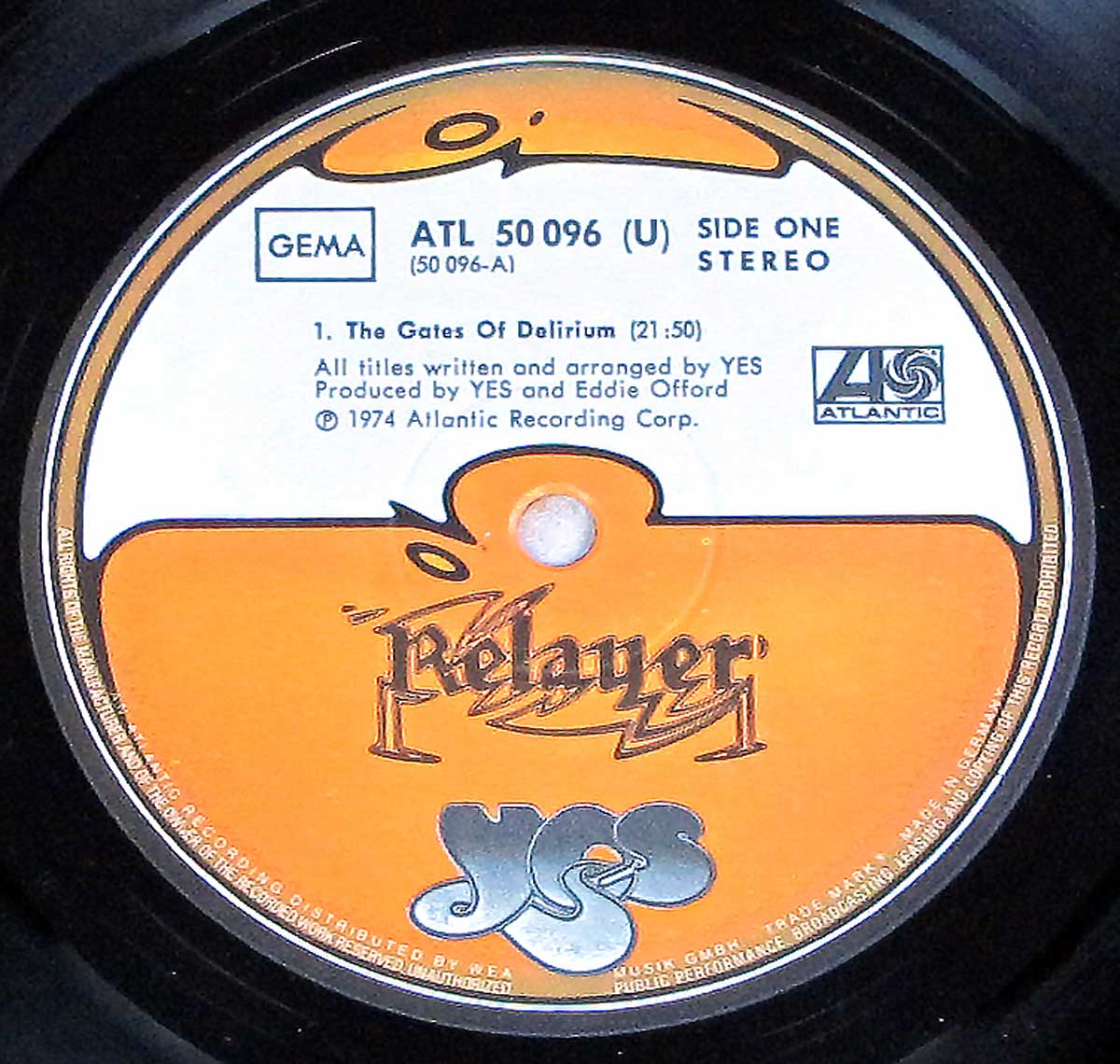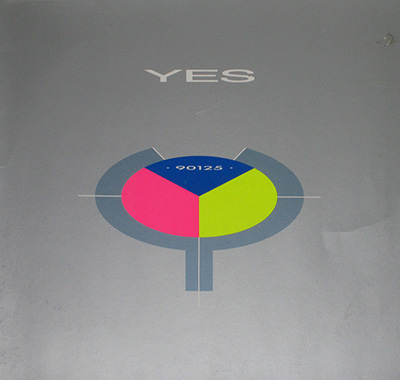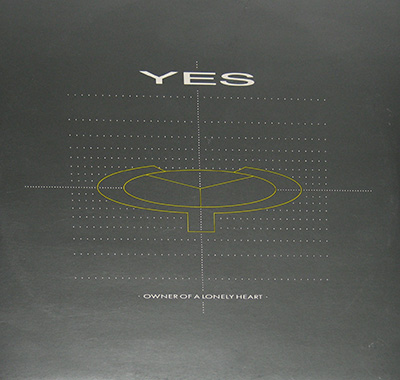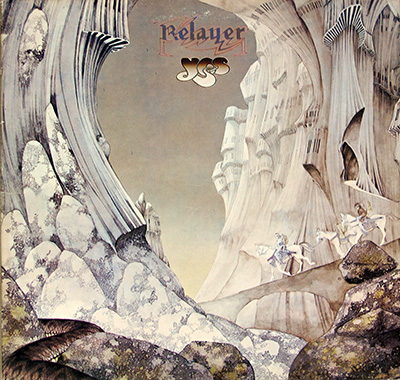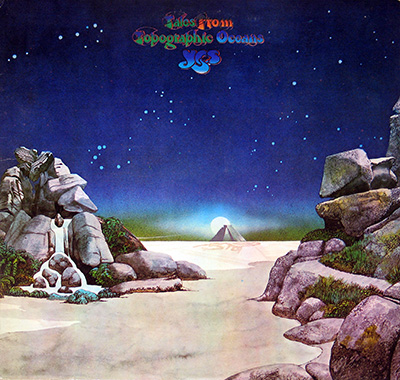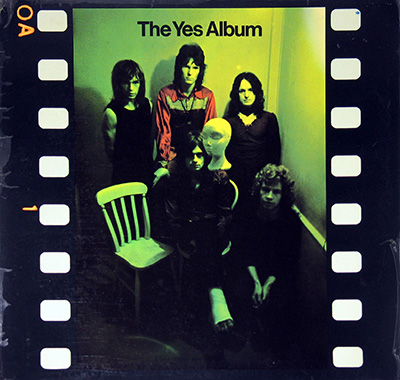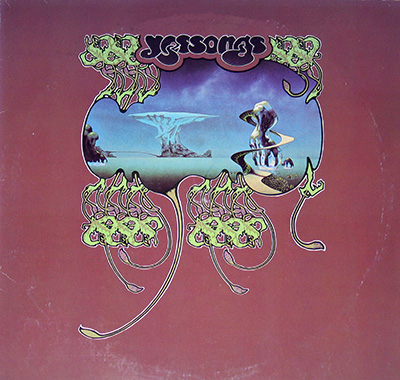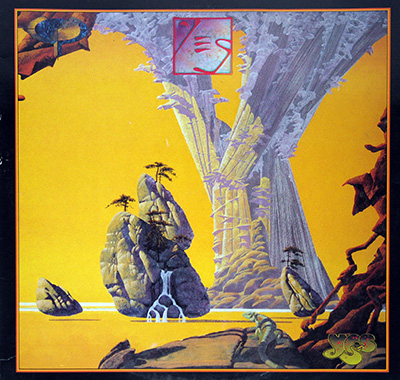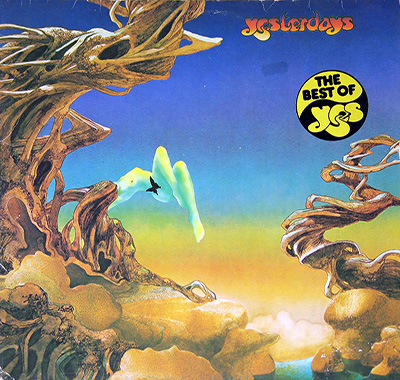"Relayer" Album Description:
YES and the Mid-Seventies Progressive Rock Landscape
In 1974, the world of progressive rock stood at a crossroads. The countercultural optimism of the late 1960s had cooled into the introspection of the mid-1970s. Britain’s economic turbulence, energy crises, and industrial unrest created a darker, more introspective cultural tone. Against this backdrop, Yes—already one of the era’s most ambitious bands—released Relayer, a sprawling and experimental work that pushed even their own complex boundaries.
The progressive rock movement had reached its creative peak by this time, with monumental releases from Genesis (The Lamb Lies Down on Broadway), King Crimson (Red), and Pink Floyd (Wish You Were Here approaching). These bands competed not only in musicianship but in vision—each album a statement of sonic architecture. Yes, fresh from the lush symphonies of Tales from Topographic Oceans, chose to strip their sound to a more abrasive, chaotic brilliance.
The Genre: Symphonic Precision Meets Jazz Experimentation
Relayer belongs to the golden age of British progressive rock—a genre that fused classical structures, jazz improvisation, and surreal lyrics into long-form compositions. Unlike American or German prog, British prog favored grand thematic concepts and philosophical overtones. Yes was part of this vanguard, alongside bands like Emerson, Lake & Palmer, Camel, Gentle Giant, and Genesis.
While earlier Yes albums like Close to the Edge displayed ornate symphonic textures, Relayer took a more daring approach: it injected jazz fusion and avant-garde tension. The album’s centerpiece, “The Gates of Delirium,” unfolds as a 22-minute sonic battle that channels both chaos and transcendence, reflecting the band’s deep fascination with musical structure as metaphor for human conflict.
Musical Exploration and Conceptual Ambition
Musically, Relayer is defined by its dense layers and unorthodox time signatures. “The Gates of Delirium” was inspired by Tolstoy’s War and Peace, with sections of rhythmic warfare followed by a serene resolution in “Soon.” Side two shifts in tone: “Sound Chaser” is a whirlwind of fusion drumming, rapid-fire guitar lines, and Patrick Moraz’s frantic keyboards, while “To Be Over” closes the album with meditative beauty, offering release from the preceding intensity.
This constant oscillation between turmoil and calm mirrored the band's own internal dynamics—Yes was a group of perfectionists, pushing their creative process to near-collapse. The recording environment at Eddie Offord’s mobile studio in late summer 1974 was charged with pressure, experimentation, and improvisation. Each take could last hours; perfection was both the goal and the curse.
The People Behind Relayer
The album was produced by the band themselves alongside engineer Eddie Offord, often referred to as the “sixth member of Yes.” His sonic fingerprints—crisp clarity amid controlled chaos—had already defined Fragile and Close to the Edge. Keyboardist Patrick Moraz, newly recruited after Rick Wakeman’s departure, brought a fresh palette to the band’s sound. His background in Swiss jazz fusion gave Relayer its angular harmonic sensibility and kinetic keyboard passages.
Jon Anderson’s vocals carried the band’s mystical vision, while Steve Howe’s guitar work reached new levels of textural depth, ranging from flamenco flourishes to distorted feedback crescendos. Bassist Chris Squire anchored the chaos with his distinctive Rickenbacker tone, and drummer Alan White delivered percussive fireworks that fused power with precision.
Line-up Shifts and the Evolution of Yes
By 1974, Yes had already seen several key changes. Founding member Peter Banks was long gone, replaced by Steve Howe; Rick Wakeman, after creative disagreements over the excesses of Tales from Topographic Oceans, departed mid-tour. His absence left a gap filled by Patrick Moraz, whose arrival marked one of the band’s most dramatic stylistic pivots. This version of Yes—Anderson, Howe, Squire, White, and Moraz—was perhaps their most daring, willing to fracture their own formula in pursuit of musical expansion.
The resulting sound was both exhilarating and divisive. Critics praised the band’s virtuosity but often questioned whether the complexity had overtaken emotional coherence. Yet for fans of progressive rock, Relayer embodied exactly what made the genre so compelling: fearless innovation, narrative depth, and instrumental brilliance.
Controversy and Critical Division
Upon release, Relayer polarized audiences. Some hailed it as a masterpiece of controlled madness—a logical progression from Close to the Edge—while others found it impenetrable. The dense mix, abstract lyrics, and relentless technicality alienated casual listeners. Even within the band, tensions simmered: Wakeman publicly criticized the direction Yes had taken, dismissing the album’s experimentalism as self-indulgent. Meanwhile, die-hard fans embraced it as one of the most daring statements in Yes’s catalog.
The controversy only strengthened the album’s cult status. Over time, Relayer came to be recognized as the band’s most adventurous work—an audacious experiment at the peak of progressive rock’s creative explosion, just before punk and new wave would strip rock back to its bones.
Legacy of Sound and Vision
Roger Dean’s gatefold artwork for Relayer remains one of the most iconic images in rock history—a monochrome dreamscape of towering stone and armored riders, reflecting both conflict and transcendence. It encapsulated the essence of Yes’s music: a fusion of the fantastical and the human, where architecture meets sound and imagination defies gravity.
Today, Relayer stands as a time capsule from 1974—a moment when rock dared to think symphonically, play fearlessly, and believe that sound could still build worlds. It was not just another Yes album; it was a statement that complexity and emotion could coexist, and that even amidst turmoil, beauty could emerge from delirium.
